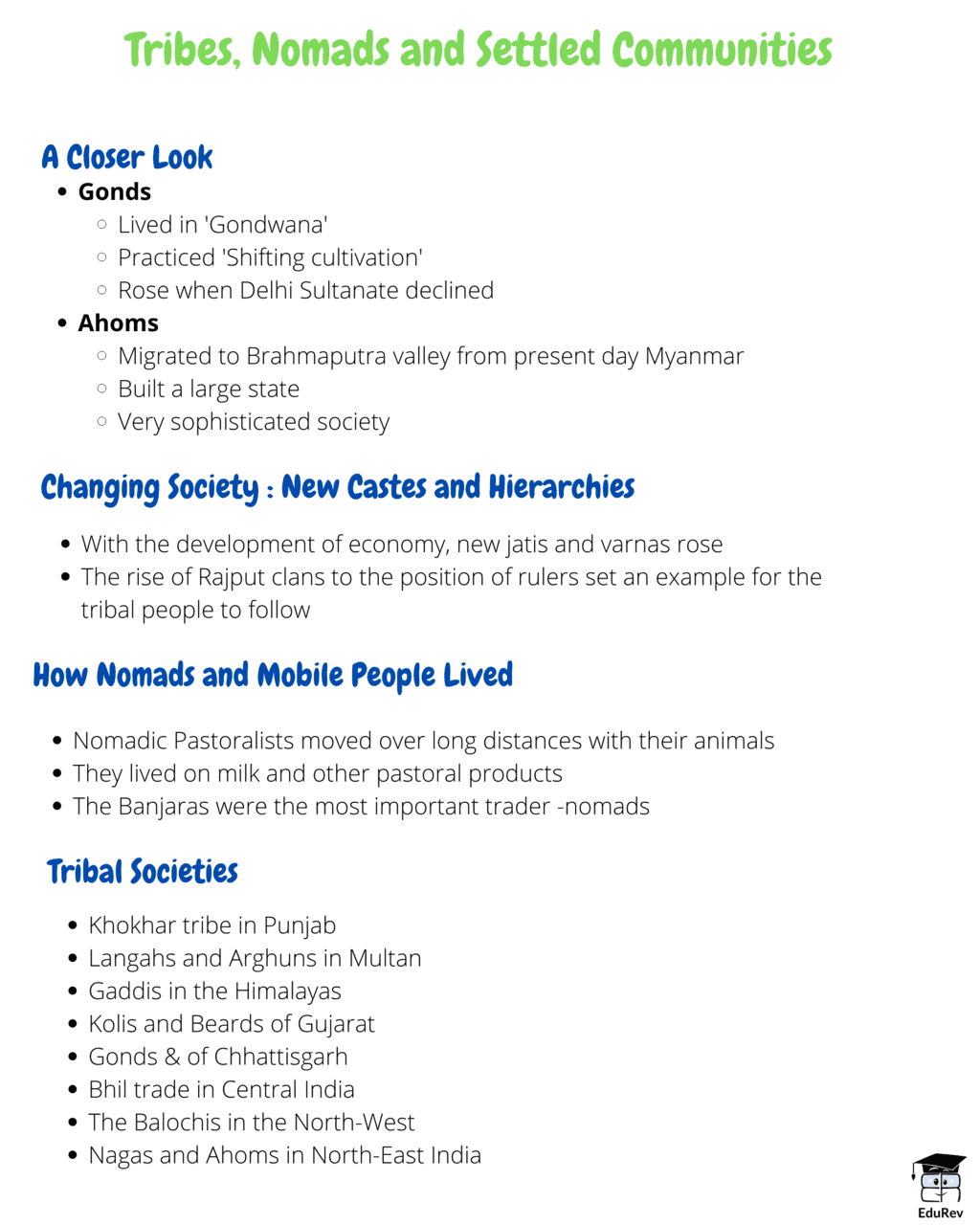UPSC Exam > UPSC Notes > Class 6 to 12 NCERT Mindmaps for UPSC Preparation > Mind Map: Tribes, Nomads and Settled Communities
Mind Map: Tribes, Nomads and Settled Communities | Class 6 to 12 NCERT Mindmaps for UPSC Preparation PDF Download

The document Mind Map: Tribes, Nomads and Settled Communities | Class 6 to 12 NCERT Mindmaps for UPSC Preparation is a part of the UPSC Course Class 6 to 12 NCERT Mindmaps for UPSC Preparation.
All you need of UPSC at this link: UPSC
FAQs on Mind Map: Tribes, Nomads and Settled Communities - Class 6 to 12 NCERT Mindmaps for UPSC Preparation
| 1. What is a tribe? |  |
Ans. A tribe is a social group consisting of people who share common ancestry, culture, and language. They usually live together in a specific geographical area and have their own social, economic, and political systems.
| 2. How do nomads differ from settled communities? |  |
Ans. Nomads are groups of people who do not have a permanent settlement and regularly move from place to place in search of resources. On the other hand, settled communities are groups of people who have established permanent homes and engage in agriculture or other forms of settled livelihoods.
| 3. What are the advantages of a nomadic lifestyle? |  |
Ans. The advantages of a nomadic lifestyle include the ability to adapt to changing environments, access to a wide range of resources, and the preservation of traditional knowledge and practices. Nomadic communities often have a deep understanding of the natural world and sustainable ways of living.
| 4. How do settled communities impact the environment? |  |
Ans. Settled communities often have a larger ecological footprint compared to nomadic or tribal groups. They engage in agriculture, construction, and other activities that can lead to deforestation, soil erosion, and depletion of natural resources. However, settled communities also have the potential to implement sustainable practices and technologies.
| 5. What are some examples of tribes or nomadic groups around the world? |  |
Ans. Some examples of tribes or nomadic groups around the world include the Maasai of East Africa, the Tuareg of North Africa, the Inuit of the Arctic, the Bedouin of the Middle East, and the Sami of northern Europe. These communities have unique cultural practices and ways of life that have endured for centuries.
Related Searches
















